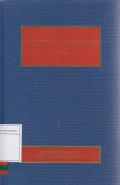
Content Analysis Volume 2
The point of view of this book is that the study of politics can be advanced by the quantitative analysis of political discourse. Why be quantitative? In reply, it is perhaps appropriate to bring o…
- Edisi
- Ed. 1, Cet. 2
- ISBN/ISSN
- 978-1-4129-3399-5
- Deskripsi Fisik
- vi, 359 hal.; ilus.; 16 x 24 cm.
- Judul Seri
- -
- No. Panggil
- R 001.4 BEA c

Comparative Methods In The Social Sciences Volume 2
This second volume of the "Comparative Methods in the Social Sciences" series provides an in-depth analysis of the logic underlying comparative methods, and comprehensively discusses data sources, …
- Edisi
- Ed. 1, Cet. 1
- ISBN/ISSN
- 1-4129-1144-3
- Deskripsi Fisik
- vi, 347 hal.; ilus.; 16 x 24cm.
- Judul Seri
- -
- No. Panggil
- R 300.72 NAR c
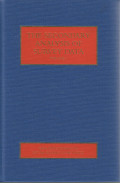
The Secondary Analysis of Survey Data Volume 4
The fourth volume of the book The Secondary Analysis of Survey Data includes four parts: the first part discusses structural equation models, the second part covers multi-level models, the third pa…
- Edisi
- Ed. 1, Cet. 2
- ISBN/ISSN
- 978-1-4129-0384-4
- Deskripsi Fisik
- xii, 390 hal.; ilus.; 16 x 24 cm.
- Judul Seri
- -
- No. Panggil
- R 001.4 JOR s

The Secondary Analysis of Survey Data Volume 3
This third volume move on to present a collection of articles which focus more specifically on some of the key analysis and modeling techniques that a secondary analyst might wish to deploy in addr…
- Edisi
- Ed. 1, Cet. 2
- ISBN/ISSN
- 978-1-4129-0384-4
- Deskripsi Fisik
- xii, 442 hal.; ilus.; 16 x 24 cm.
- Judul Seri
- -
- No. Panggil
- R 001.4 HAR s

The Secondary Analysis of Survey Data Volume 2
The first volume in this collection introduced the reader to some broad-brush issues that will be of concern to social and behavioral scientists of all types, including those specifically intereste…
- Edisi
- Ed. 1, Cet. 2
- ISBN/ISSN
- 978-1-4129-0384-4
- Deskripsi Fisik
- xi, 340 hal.; ilus.; 16 x 24 cm.
- Judul Seri
- -
- No. Panggil
- R 001.4 STE s
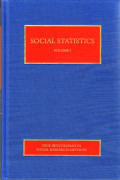
Social Statistics Volume 4
Social Statistics Volume 4 is the final volume and the issues raised in the general context of event history data, and more specifically repeated binary data, are extended to the modelling of ordin…
- Edisi
- Ed. 1, Cet. 1
- ISBN/ISSN
- 978-1-84787-356-9
- Deskripsi Fisik
- viii, 456 hal.; ilus.; 16 x 24,2 cm.
- Judul Seri
- -
- No. Panggil
- R 300.72 FIE s

Social Statistics Volume 3
Social Statistics Volume 3 is discuss about much of the classical work in social statistics in the first half of the twentieth century focused on the analysis of cross-sectional data. Another discu…
- Edisi
- Ed. 1, Cet. 1
- ISBN/ISSN
- 978-1-84787-356-9
- Deskripsi Fisik
- viii, 463hal.; ilus.; 16 x 24,2 cm.
- Judul Seri
- -
- No. Panggil
- R 300.72 AND s
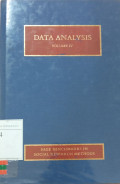
Data Analysis Volume 4
Data Analysis Volume 4 discusses about part four quantitative analysis (continued), Multivariate analysis: multiple and logistic regression, Dealing with Multiple sets of data/ objects, integrating…
- Edisi
- Ed. 1, Cet. 1
- ISBN/ISSN
- 978-1-4129-2276-0
- Deskripsi Fisik
- vi, 397 hal.; ilus.; 16 x 24,2 cm.
- Judul Seri
- -
- No. Panggil
- R 001.4 WOO d

Data Analysis Volume 3
This article introduces social network analysis as an approach and set of techniques for the study of information exchange. Social network analysis focuses on patterns of relationships between acto…
- Edisi
- Ed. 1, Cet. 1
- ISBN/ISSN
- 978-1-4129-2276-0
- Deskripsi Fisik
- vi, 392 hal.; ilus.; 16 x 24,2 cm.
- Judul Seri
- -
- No. Panggil
- R 001.4 HAY d

Data Analysis Volume 2
Data Analysis Volume 2 discusses Part Three: Mixed-Methods and Beyond, which is further divided into sections on Mixing, Integrating, Bridging and Beyond, Mixed-Method Analytical Techniques, and In…
- Edisi
- Ed. 1, Cet. 1
- ISBN/ISSN
- 978-1-4129-2276-0
- Deskripsi Fisik
- vi, 405 hal.; ilus.; 16 x 24,2 cm.
- Judul Seri
- -
- No. Panggil
- R 001.4 GRI d


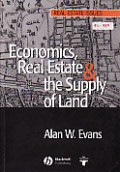

 Karya Umum
Karya Umum  Filsafat
Filsafat  Agama
Agama  Ilmu-ilmu Sosial
Ilmu-ilmu Sosial  Bahasa
Bahasa  Ilmu-ilmu Murni
Ilmu-ilmu Murni  Ilmu-ilmu Terapan
Ilmu-ilmu Terapan  Kesenian, Hiburan, dan Olahraga
Kesenian, Hiburan, dan Olahraga  Kesusastraan
Kesusastraan  Geografi dan Sejarah
Geografi dan Sejarah